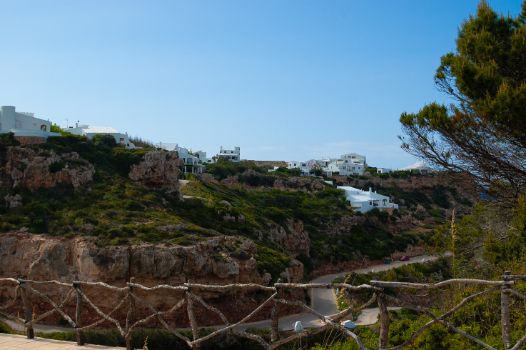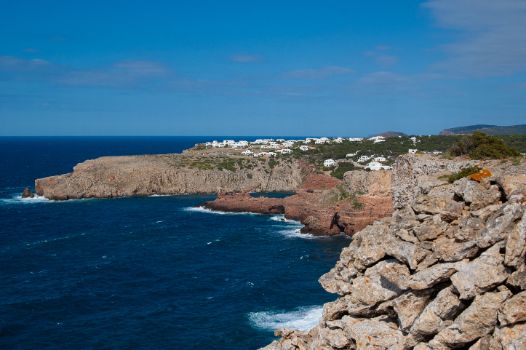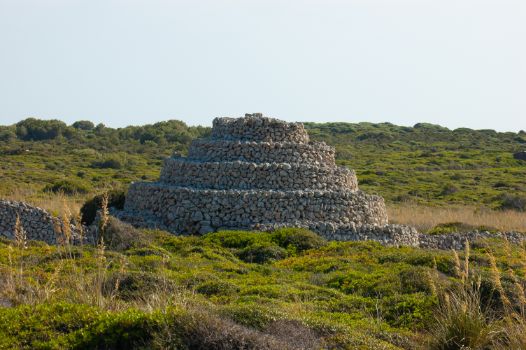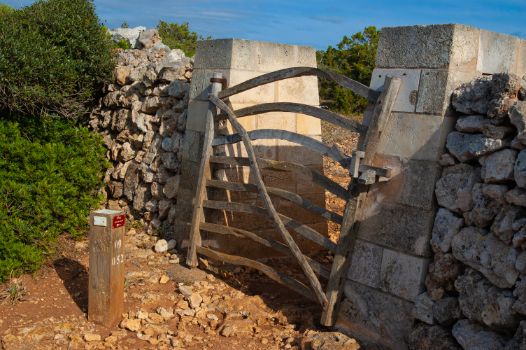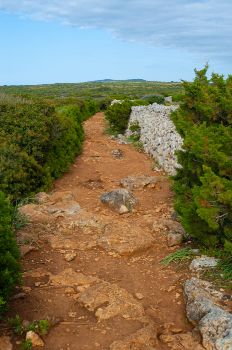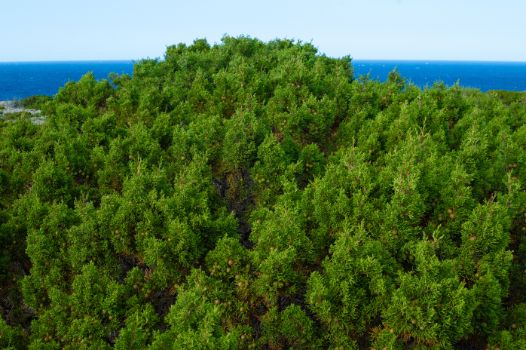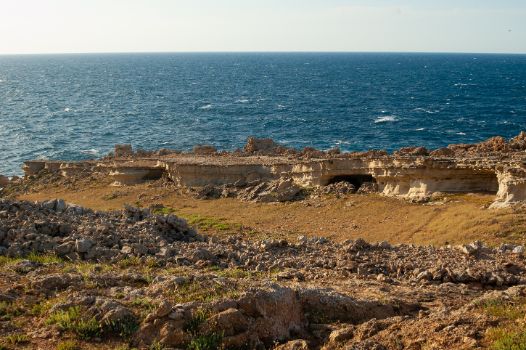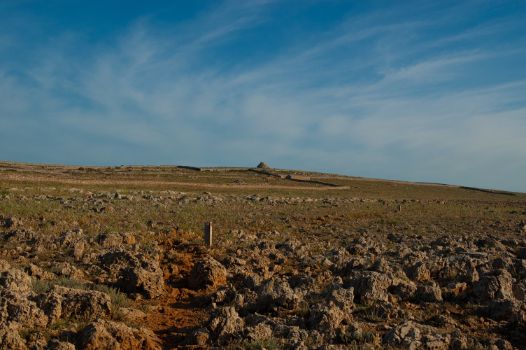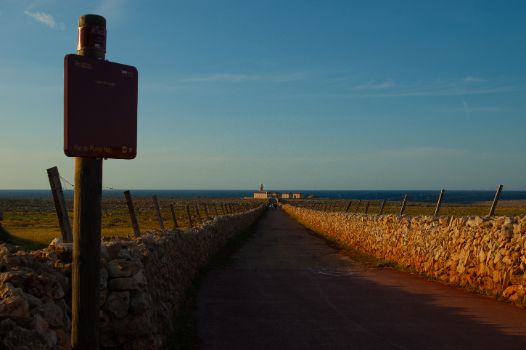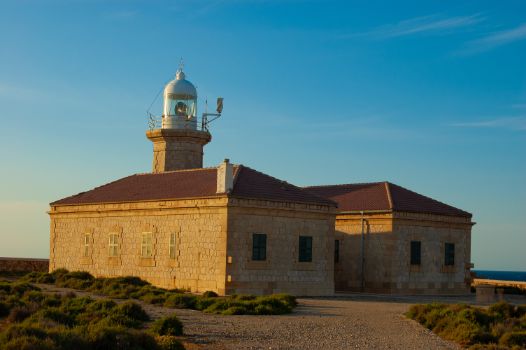
Net of Natural
Trails

Stage 9 : Cala Morell - Punta Nati
Description
From the necropolis of Cala Morell to the Punta Nati lighthouse, in a landscape with scattered barraques
A short stage of just over 7 km that starts at the prehistoric Cala Morell, with its Talaiotic necropolis as its most outstanding feature. The entire stage passes through agricultural and livestock farms or tanques, with their characteristic Menorcan gates and six livestock huts or barraques adorning the surroundings. Those elements brave the notorious tramontane wind, the strong north wind that blows across Menorca, which is responsible for the scarce vegetation in the area. Finally, you will reach the Punta Nati lighthouse, the scenario of many shipwrecks in the past, where this stage comes to a, certainly happier, end.

The ninth stage of the fascinating Camí de Cavalls Nature Trail begins at the information board located in Lira street, next to the directional sign that indicates you to take the path that, after crossing a Menorcan gate, plunges into the Costa Nord de Ciutadella SCI and SPA.
You will be walking by the walls of the tanques, as the agricultural estates in Menorca are called, until you reach the edge of the cliff. The route continues along the cliff, which allows you to enjoy spectacular views of the coastal cliffs in the direction of the road and saying goodbye to Cala Morell, where a visit to its necropolis is a must.
After a left turn, continue walking parallel to the stone wall, away from the coastline. You will reach one of the famous barraques, a circular stone construction used until the 19th century as a shelter for animals and people in livestock farming.

Shortly after, you leave the entrance to the Ciutadella Aeromodelling Club to the right, where flying enthusiasts can enjoy their hobby in a privileged environment. There is a succession of Menorcan gates that lead to the different estates through which the trail passes, please ensure to leave them properly closed.
The predominant landscape is Mediterranean scrubland that clings to the scarce soil in the area, with the occasional areas with rocky outcrops. Among this Mediterranean scrubland, there is a good representation of Phoenician juniper (Juniperus phoenicea) with numerous small and medium-sized bushes that vegetate in perfect condition. These specimens have been able to adapt to the coastal conditions exposed to the frequent tramontane winds.
New barraques can be seen standing as evidence of the past relevance of livestock farming in this area, where today there are still a few heads of cattle being farmed in the traditional way.

The route approaches the coast again, as the presence of plants dwindle, and advances close to the coast for a considerable stretch. This allows you to enjoy the cliffs in all their splendour, with places such as Punta de Son Escudero, Punta des Llosar or Punta Cala es Morts standing out. Near the latter, you will find a cross in memory of the Général Chanzy steamship, a French liner that sailed the route between Marseilles and Algiers that sank here in the early hours of 10 February 1910 with 157 people on board, including crew and passengers, of whom only one survived: Marcel Baudez.
After crossing a new Menorcan gate and several other livestock huts, you face the final stretch of this short stage of just over 7 km, which ends next to the Nature Trail information board. This is located on an asphalt track metres away from car park for motor vehicles that facilitates access to this end of the stage. However, if you continue along the aforementioned track towards the coast, you will be able to enjoy the views over the Punta Nati lighthouse.
Links of interest
Profile
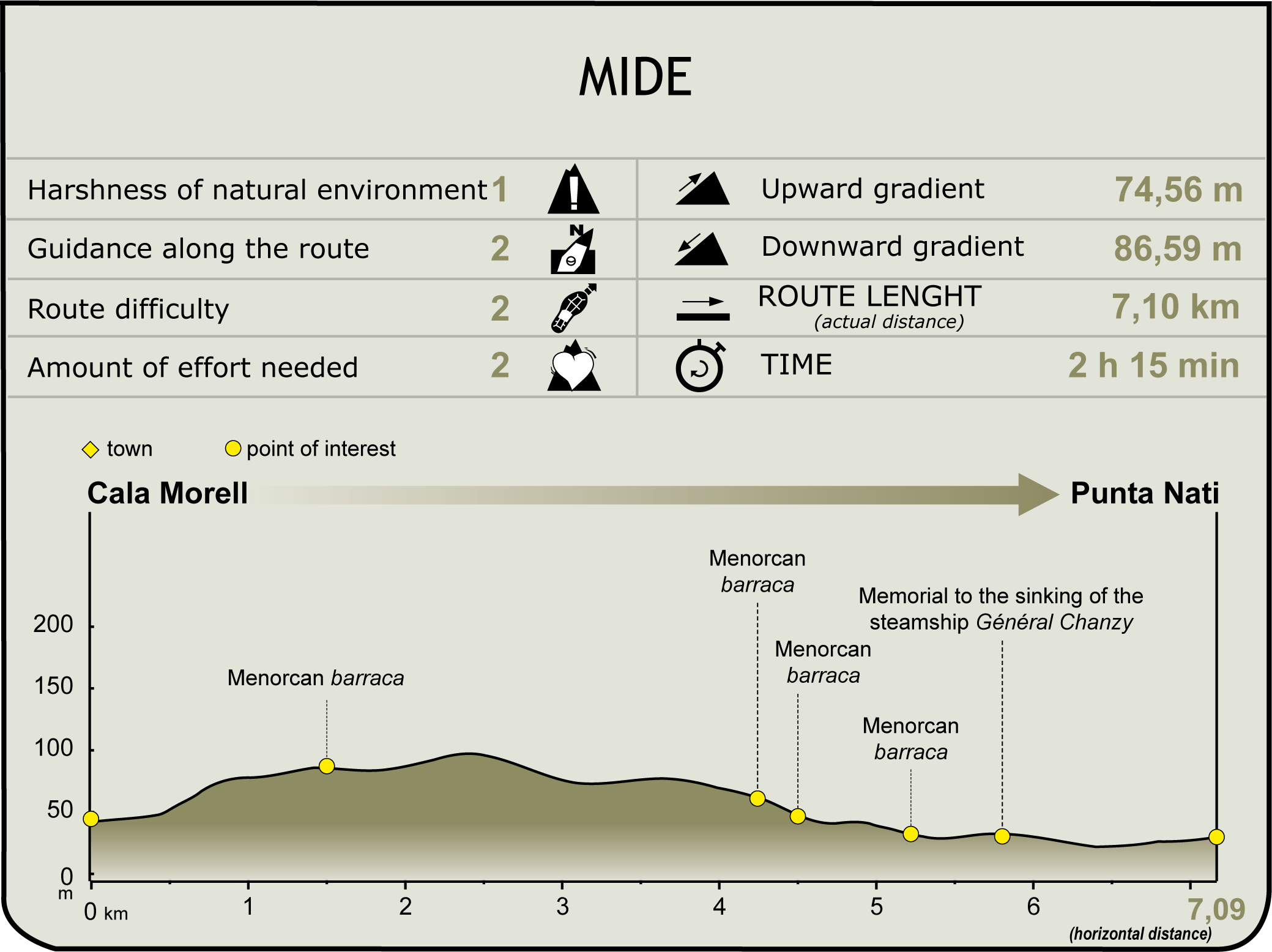
(Calculated according to the MIDE criteria for an average excursionist with a light load)
Highlights
Barraques
Barraques are traditional dry masonry huts with a circular floor plan and stepped walls, which were use and were used to protect livestock and even farmers from the weather. Due to the harsh and arid conditions in the north of Menorca, which is swept by a strong northern wind, these huts were frequently built at the second half of the 19th century, and most of them are still in a very good state of preservation today.
Punta Nati Lighthouse
The many shipwrecks that occurred in this area, especially the shipwreck of the French steamship Général Chanzy, with 156 dead and only one survivor, prompted to build this lighthouse.
Works began in 1912 and opened in September of the following year. The tower is 11.5 metres high, with a single-storey rectangular building attached to each side. Its light can be seen at a distance of 26 miles, consisting of groups of 3 and 1 white flashes every 20 seconds.
The Nati lighthouse, as it is also known by the locals, also has bunkers from the Spanish Civil War and a escape through which enormous columns of water raise on stormy days. All in all, the fantastic location has made it a very famous spot to enjoy a spectacular sunset.



